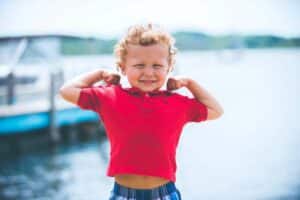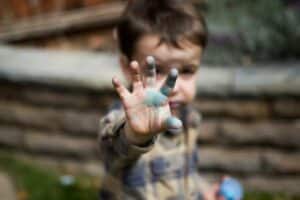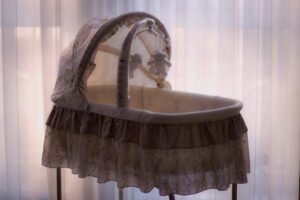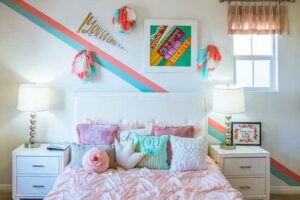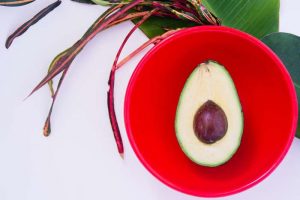With our first baby, we didn’t know how many clothes he would need. My wife would constantly ask me the same question:
So, How many 0-3 clothes do I need?
For a baby’s wardrobe, it is recommended to have around 8-10 sets of 0-3 clothes. This includes two outfits and a sleeper each day. It’s important to consider how often you plan on doing laundry and to have extra clothes in case of accidents or spills.
It wasn’t until my son started growing out of his clothes every few weeks that I realized I needed to buy more! If you are struggling with the same question, I have made a helpful guide through personal experience and research. Here’s what you need to know about baby clothes.
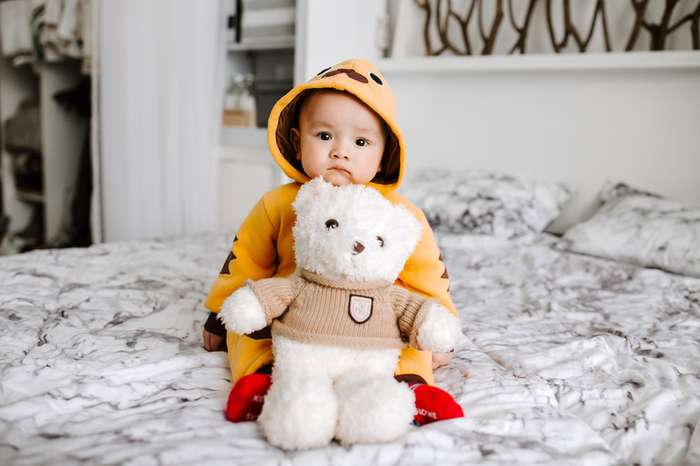
How many 0-3 clothes do I need?
For one thing, several options appear appealing. Because babies are so adorable, choosing between them may be difficult. Furthermore, babies grow out of their clothing rapidly, leaving you with a lot of stuff they no longer wear. Even with all of this, you’ll need some 0-3 clothing for your baby. These are the following:
Bodysuits
Onesies, also known as bodysuits, are a must-have item for any newborn. Most have adjustable head and shoulder regions that your baby can wear as they grow.
Pajamas
It’s nighttime, and you want your baby to be comfortable so everyone can get some rest. You don’t want fussy clothing getting in the way, so functional pajamas are key. Look for features like built-in mittens and covered feet to keep your little one comfy all night long.
Hats
When you venture out with them, put a wide-brimmed hat on them to protect against the sun and other elements.
Pants
It would help if you also had these on hand. In the event of any spills, go for a stretchy, breathable cloth that is simple to maintain.
Bibs
Your baby is drooling at this age. Just make sure it’s big enough around their neck to breathe if they shift around. Get only the essentials and wait until they grow out of that stage before purchasing more clothes.
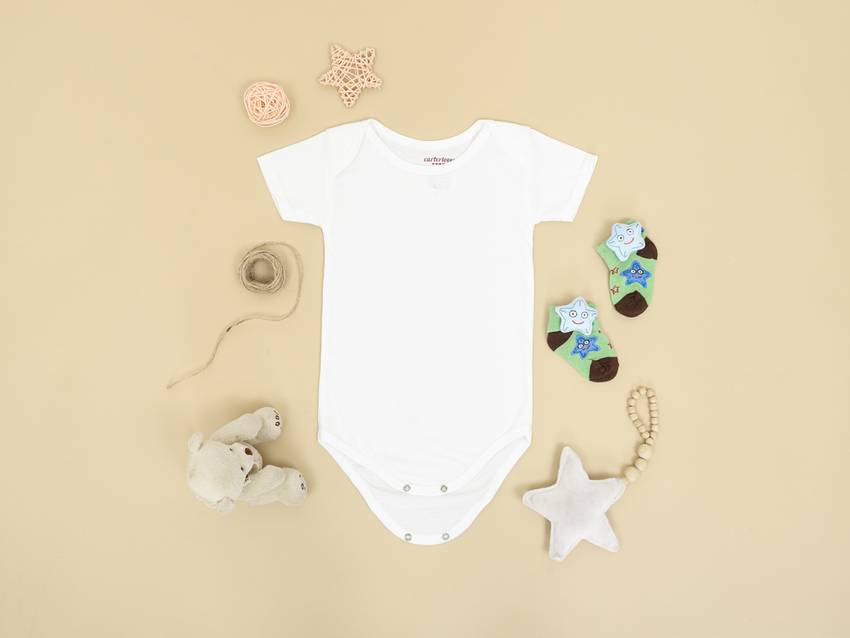
There are a few things to consider before buying 0-3 baby clothes
When will your baby be born/adopted? This is important for buying seasonal clothes and the outfit they will come home in.
How big do you think your newborn baby will be? Newborn clothing sizes only apply to babies weighing between 7 and 8 pounds. If your doctor determines that your infant is likely to weigh more than 7 pounds, then newborn-size outfits may not be necessary.
Also, remember that before leaving the hospital, your infant will lose a considerable amount of weight (about 7 percent of its body weight).
Are you having a boy or a girl? If you don’t know the answer to this question, you’ll have to buy clothes you can wear for either gender.
Things You Need to know before buying 0-3 baby clothes
Babies’ bodies tend to cool down rapidly. This is especially the case for preterm or low-birthweight newborns with little body fat and who cannot regulate their temperature. Even full-term infants may have challenges keeping a healthy body temperature, even if you deliver/adopt your new baby in the summertime.
They not only have a harder time maintaining body temperature but also don’t have much hair to keep their heads warm. Baby hats are required for newborn babies.
The safest option for your baby to sleep is without any other items in their crib; this includes blankets. However, if you do not want to use a swaddle, onesies that include foot covers are the next best.
Babies are a mess to keep! You’ll want to have extra baby clothes on hand for the inevitable situations, such as spit-ups, diaper blowouts, drooling, formula/breast milk spills, etc. This includes a large bib supply.
Tips for buying 0-3 baby clothes
- Packing at least one outfit in hospital-appropriate sizes is recommended.
- Don’t go overboard on newborn-sized baby apparel! If your kid is big enough to fit into them (unless they are preterm/ LBW), they will likely not last more than a few days.
- It’s hard not to buy every item of 0-3 month baby clothes because they’re all so adorable, and your guests at the baby shower will understand! If you can, try waiting to purchase anything but essential items after the shower.
- Babies come in all shapes and sizes, so it isn’t easy to know what kind of clothing will fit them best. For example, my youngest daughter was quite chubby as a baby, and I couldn’t keep shoes on her at all. It wasn’t until she started crawling a lot and losing some weight (around 8 months old) that I could put shoes on her. If you’re unsure what size or type of clothing your baby will need, it’s better to wait or just buy socks that look like shoes until you have a better idea.
- Do not max out your credit card by buying tiny baby clothes. Your child will probably need something bigger in just a few months. It is more cost-effective to buy 3-6 month and 6-9 month clothing items. In my experience, most babies stay in the 6-9 month size range the longest because they lose some baby weight as they learn to move around/crawl/stand.
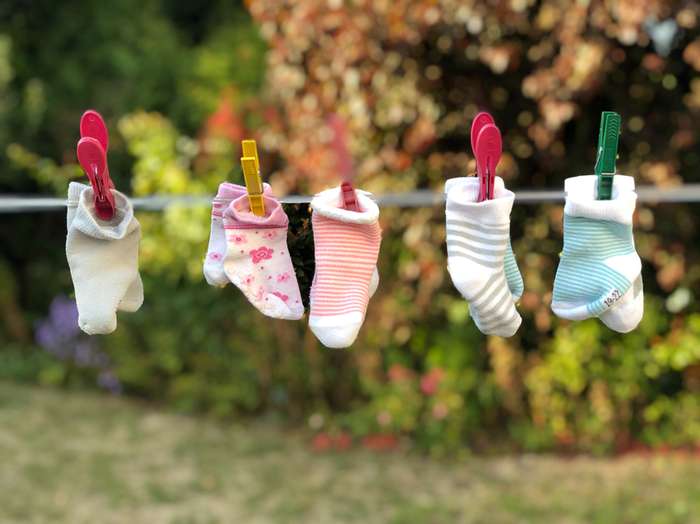
What Type of Newborn Clothes Should I Buy?
Sleepers and long-sleeve onesies are the way to go. I stated above that you’d need 14 outfits in two layers, so you’ll need 28 babies for this baby clothing product. I propose buying 14 sleepers and 14 long-sleeve onesies. Because their legs don’t require two layers, only their upper bodies, onesies are ideal for the underlayer, while sleepers are ideal for tops.
Building Your Baby’s Wardrobe
Consider a few things while deciding how many 0-3 clothes do I need and how to include items in your registry.
Think About Laundry
If you have regular access to laundry facilities, you won’t need as many items of clothing for your baby. However, you’ll need more clothes if you don’t have easy access to laundry. Here’s a list of essentials for newborns that assumes you’re able to do a few loads of laundry each week:
- If you do laundry once every two weeks, double the numbers below.
- Reduce the figures below to half if you are doing laundry daily.
Baby Clothes Sizes
Follow these guidelines:
- It’s better to buy fewer newborn clothes and more 0-3-month-old clothes. Newborns usually only stay in that size for a few weeks, and if you have a bigger baby, they may not even fit into newborn sizes.
- Don’t be afraid to experiment. Every baby brand fits differently when it comes to sizing.
Stay Organized
- You can arrange them by type of clothing, size, or any other system that works for you.
- Separate clothes by size using closet dividers to make the most of a small space and prevent waste. It can be difficult to keep track of what you have on hand when everything is crammed into one tiny closet, but these hanging signs will help you stay organized (this set goes from newborn through 2T). Not only will it be easier to see what clothing options are available, but you’ll also save money in the long run by not forgetting about smaller items your child has outgrown.
One more organizational suggestion: as soon as your baby outgrows an item of clothing, replace it with something new. Maintaining track of everything is difficult, but knowing how to do so can help you manage your child’s wardrobe. Keep a storage container (or two) on hand to store them; then, you may either keep them or give them away.
Frequently Asked Questions
Q1: How long do most babies wear 0-3 month clothes?
Ans: It varies from baby to baby, but most babies will be in 0-3 month clothes for at least two months.
Q2: How many pounds do 0-3 months’ clothes fit?
Ans: 0-12 pounds (but usually around seven to nine pounds)
Q3: How many outfits does a baby need in each size?
Ans: The number of clothes you need per size really varies depending on your laundry habits. But, as a general guide, most people usually need six to eight outfits per size.
Q4: Is Size 0-3 months the same as 3 months?
Ans: 0-12 pounds (usually around seven to nine pounds) will fit into 0-3 month clothes, while 12-18 pounds (usually around 11 pounds) will fit into size three months.
Q5: How many outfits should a newborn have?
Ans: Newborns usually only stay in that size for a few weeks, and if you have a bigger baby, they may not even fit into newborn sizes. It’s better to buy fewer newborn clothes and more 0-3-month-old clothes.
What To Do Next?
Be sure not to over-buy or under-buy baby clothes. The last thing you want is to do laundry every day or run out of clothes because your baby has outgrown them.
